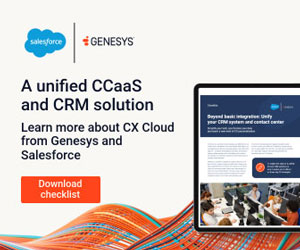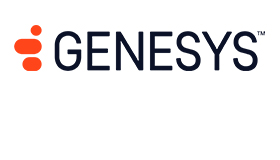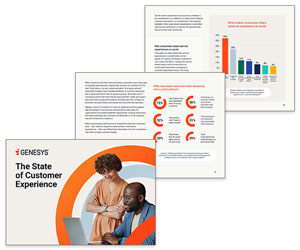Steve Boberski at Genesys examines how an AI-powered Contact Centre as a Service (CCaaS) platform and its capabilities can enable government agencies to deliver efficient and effective services.
Public sector agencies face many of the same challenges around modern service delivery as their commercial counterparts.
These are driven by the era of digital and the rise of customer expectations, ongoing budget issues, staffing challenges, and federal mandates that require comprehensive and complex action – including migration to the cloud.
In addition, the language of government now is shifting from “improve customer experience” to “improve efficiency.” But these can be seen as one and the same.
Cloud Migration: An Opportunity to Transform
Change can be difficult; transforming the way an organisation works often introduces both cultural and technical challenges.
One of the most common trends among the public sector, particularly in its “race to the cloud,” is the propensity for an agency to lift and shift its legacy capabilities rather than truly transforming technologies.
While it might initially appear to be the path of least resistance, this approach often means those agencies preserve inefficient or outdated processes. In the case of many legacy systems, some features and configurations exist only because there was no other way to deliver a particular feature or function.
Transformation can feel like a big step. And agencies often ask, “Where do I start?” The first step is to define business requirements, so you don’t replicate inefficient processes and configurations.
Far too often, organisations back into a solution based on outdated, legacy technical requirements. There’s a logical progression to discovery: Business requirements lead to functional requirements and, subsequently, functional requirements lead to technical requirements.
To put it simply, ask what you’re trying to solve for and then what that would look like. Ultimately, this will lead you to ask, “What’s the best technology to deliver those requirements?”
Discovery is the most crucial stage of any migration and there are a variety of approaches that may or may not work for your agency. Regardless of your approach, remember to include the business/end users early in the discovery process.
Additionally, it is important to take a full lifecycle approach to gathering requirements. Data retention policies, for example, are often overlooked until it’s time to cutover a new system. And that can lead to an unplanned delay while sourcing a solution.
Modernising Public Sector Operations
It’s been years since federal mandates first called for agencies to move to commercial cloud services wherever possible – part of a “cut-and-invest” strategy that reallocates funding associated with maintaining legacy systems to more modern technologies, cloud solutions and shared services.
Cloud-based contact centres play a pivotal role in modernising public sector operations by centralising communication and streamlining workflows for more efficient service delivery.
These CCaaS platforms can help simplify application integration and offer scalability and flexibility that isn’t possible in a legacy on-premises environment.
They also enable organisations to expand or reduce resources based on demand without over-provisioning infrastructure.
The cloud is also the foundation needed for organisations to effectively leverage AI capabilities. By automating routine tasks and introducing advanced tools, such as AI-driven analytics, cloud contact centres can improve efficiency, reduce costs and enhance customer satisfaction.
Breaking Through the Dependency of Compatibility
Government agencies face significant challenges with compatibility when implementing technology at scale.
For instance, larger agencies may have applications with thousands of users across hundreds of sites. This often introduces complex dependencies between hardware, software and interconnected systems.
Deploying new servers or applications often results in compatibility gaps, such as outdated software on some systems or upgrades breaking critical connections between platforms.
Interoperability between multichannel systems, such as call recording, workforce management and associated contact centre platforms could further complicate progress.
Each patch or upgrade can potentially disrupt intersystem integrations, creating a cycle of dependency and potentially exposing an organisation to exploits because of unpatched or unsupported software.
With a CCaaS model, cloud service providers are responsible for software updates, security patches and system maintenance.
This frees internal IT teams to focus on other systems or possibly more strategic initiatives. Additionally, a comprehensive solution can help eliminate the dependency on application compatibility that negatively impacts legacy environments.
Key Benefits of Cloud-Based Contact Centres for the Public Sector
Let’s look at the primary reasons to make the move to the cloud, including enabling advanced capabilities like AI that can further transform the customer experience.
Cost Efficiency
Freeing up funds that legacy systems consume can have a major impact on the adoption of AI technology.
Unlike legacy, on-premises systems that require significant upfront investments in hardware and perpetual maintenance, cloud platforms allow businesses to only pay for the services or cloud instances they use, which can reduce capital expenses.
Because the cloud model offers the financial advantage of a fixed monthly rate based on actual user count, agencies can eliminate unnecessary spend for licenses or features they may never deploy. They can reallocate that money to invest in more advanced capabilities like AI and automation.
Increased Operational Efficiency
With a cloud-based system, the latest collaboration technology is always at the users’ fingertips. Upgrades and maintenance are included, so the burden no longer falls to the internal technology staff.
And communication tools like messaging, voice, chat, audio or video conferencing, and many other apps, work together seamlessly in a streamlined workflow to enable a unified experience.
Enhanced Customer Satisfaction
Informed cost reductions and efficiency gains often yield a direct, positive impact on customer satisfaction.
For example, agencies might deploy automated solutions, such as AI-powered virtual agents to handle routine inquiries instantly and speed resolution times.
This is a win not only for customers, but also for employees. By reducing the number of rote, mundane tasks, agencies work to improve agent/employee satisfaction.
This can in turn lead to increased retention, a more skilled workforce and subsequently, even more satisfied customers. This creates what I call a concentric spiral of joy and satisfaction.
Because an AI-powered cloud platform integrates customer interactions and data across channels, business units can personalise engagements based on unique preferences and historical data.
With 24/7 availability, services are accessible at any time, potentially reducing wait times and accommodating diverse schedules.
For example, rather than asking customers to hold in a queue, you can use AI tools to offer callback services. This leads to not only reducing the burden on customers but has a direct, bottom-line impact by reducing telecommunications costs.
Agility and Innovation
Many agencies find that migrating to a cloud solution ultimately enables both agility and innovation. On-demand resource availability and optimised provisioning capabilities can accelerate the adoption of new technology and enable scalable and agile deployments.
Cloud platforms can also seamlessly scale services to handle any surge in demand – expected or not – helping to ensure uninterrupted access during peak periods. It fosters continuous innovation and integration with modern AI tools for more effective and responsive public services.
Adopting AI tools can address another challenge in the public sector – the aging workforce or “silver tsunami.”
According to 2022 data from not-for-profit USAFacts, more than a quarter of federal workers fall into the 55-plus age range. Many organisations face the risk of losing institutional knowledge when those workers retire or leave.
When that knowledge walks out the door, it adds significant risk to delivering positive customer experiences.
By providing less-experienced agents with real-time access to historical data and automatic prompts served up through an AI-powered contact centre platform, those agencies can help level up their workforce.
The Cloud for Today and Tomorrow in Government
As you plan your migration, think beyond the initial transition to the future and whether your cloud platform today can support your long-term needs. The opportunities of a cloud-based contact centre can be a major game-changer for government agencies.
While taking an AI-powered approach to service delivery might seem time-intensive, agencies can make major headway and realise gains that are significant and immediate by starting with an AI-powered CCaaS platform.
This blog post has been re-published by kind permission of Genesys – View the Original Article
For more information about Genesys - visit the Genesys Website
Call Centre Helper is not responsible for the content of these guest blog posts. The opinions expressed in this article are those of the author, and do not necessarily reflect those of Call Centre Helper.
Author: Genesys
Reviewed by: Jo Robinson
Published On: 27th Mar 2025
Read more about - Guest Blogs, Genesys






 Genesys empowers more than 8,000 organisations in over 100 countries to improve loyalty and business outcomes by creating the best experiences for their customers and employees. Through Genesys Cloud, the AI-Powered Experience Orchestration platform, Genesys delivers the future of CX to organisations of all sizes so they can provide empathetic, personalised experience at scale. As the trusted platform that is born in the cloud, Genesys Cloud helps organisations accelerate growth by enabling them to differentiate with the right customer experience at the right time, while driving stronger workforce engagement, efficiency and operational improvements.
Genesys empowers more than 8,000 organisations in over 100 countries to improve loyalty and business outcomes by creating the best experiences for their customers and employees. Through Genesys Cloud, the AI-Powered Experience Orchestration platform, Genesys delivers the future of CX to organisations of all sizes so they can provide empathetic, personalised experience at scale. As the trusted platform that is born in the cloud, Genesys Cloud helps organisations accelerate growth by enabling them to differentiate with the right customer experience at the right time, while driving stronger workforce engagement, efficiency and operational improvements. 











